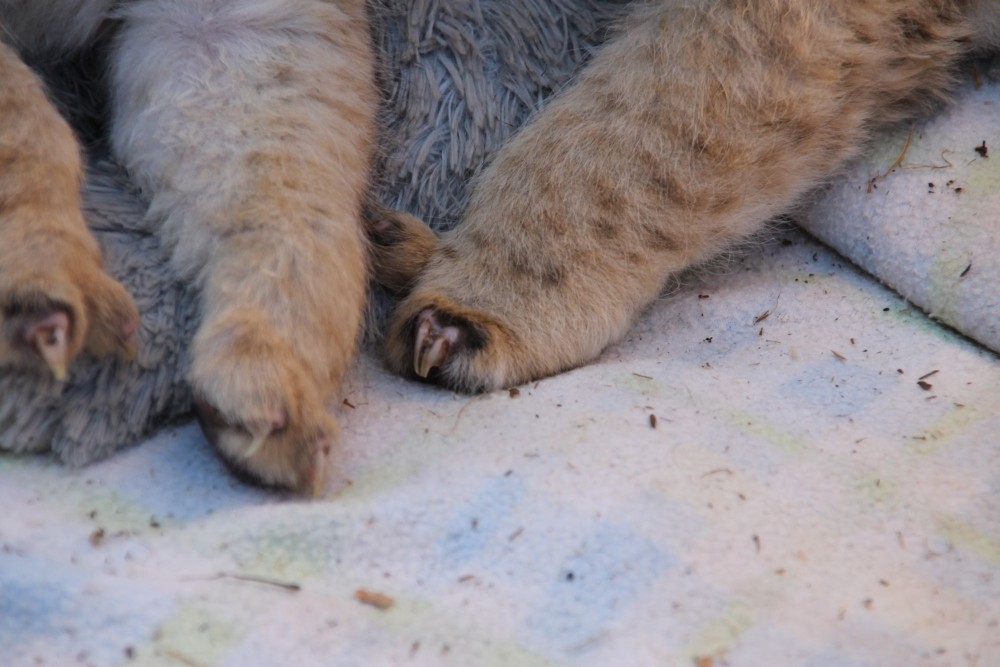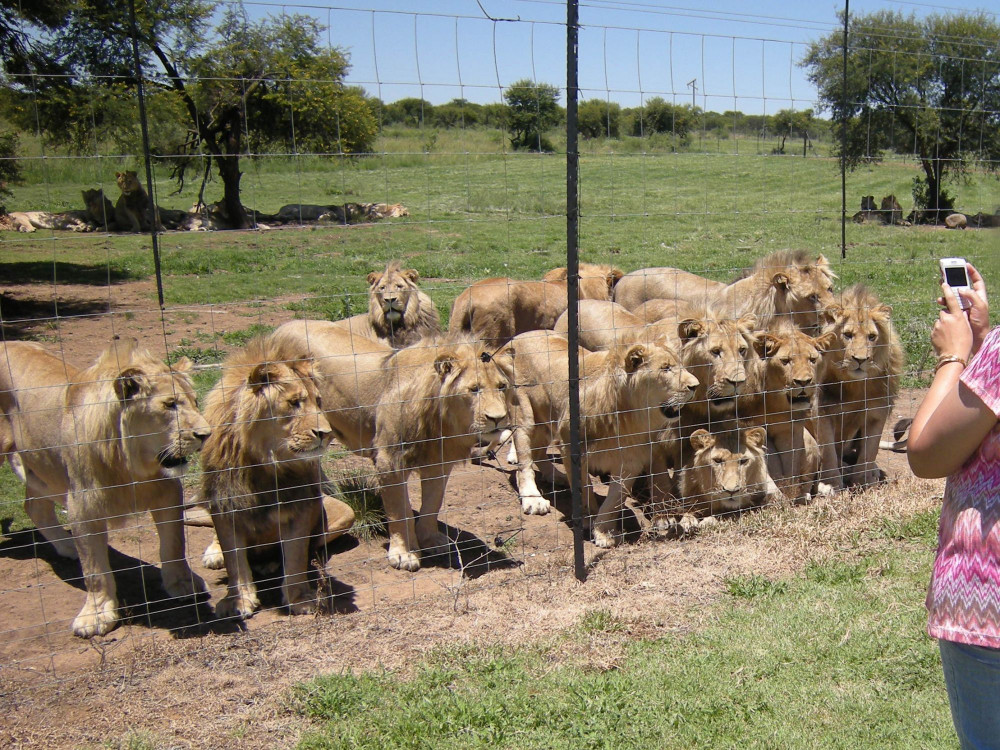Petition to ban the global wildlife trade
Join World Animal Protection's global campaign calling on Canada and other countries to ban the global wildlife trade.

The lion bone trade refers to the trade in bones and other body parts of lions, which are used in Traditional Asian Medicine. In some countries, lion bones are used as a substitute for tiger bones.
Lion bone exports were initially thought to be a ‘by-product’ of the trophy hunting industry, but a study of skeleton exports in 2017 found that 91% included the skulls and were therefore likely killed specifically to supply the Southeast Asian bone trade. Another recent study found that about one-third of the facilities breed and keep lions for the trade of bones and other lion products.
Between 8,000 and 12,000 African lions are bred and kept captive in facilities in South Africa, where they face a cruel cycle of exploitation.
Farmed lion cubs are torn from their mothers shortly after birth, and used for tourist activities such as petting, feeding, and cuddling. Once they grow too big to be safely handled, they are moved on to be exploited in other tourist attractions such as ‘walking with lions’ activities.
Mature female lions are speed-bred, producing many more litters than is natural in order to keep up with the demand for lion cubs, which often results in inbreeding and cub deformities.
 Lion cubs born with deformed paws through captive in-breeding at unscrupulous facilities. | Photo credit: Anonymous, Blood Lions.
Lion cubs born with deformed paws through captive in-breeding at unscrupulous facilities. | Photo credit: Anonymous, Blood Lions.
Mature male lions are often sold to canned hunting facilities where they are shot and killed in confined enclosures by trophy hunters. Trophy hunters are only after the “trophy” - the lion’s head and pelt, so the bones are then sold into the lion bone trade.
 Male lions at a South African tourist venue. Often these lions end up in the canned-hunting lion trade where they are shot by trophy hunters who only want their heads, and their bodies are exported for Traditional Asian Medicine. | Photo credit: Anonymous, Blood Lions.
Male lions at a South African tourist venue. Often these lions end up in the canned-hunting lion trade where they are shot by trophy hunters who only want their heads, and their bodies are exported for Traditional Asian Medicine. | Photo credit: Anonymous, Blood Lions.
In China, lions and tigers are kept in tiny cells in large, industrial-style farms. These facilities provide only the minimum requirements for the cats to survive, such as food and water. As a result of these unnatural conditions, the captive cats often perform abnormal behaviours such as pacing back and forth for hours and biting their own limbs and tails.
Lion bones have not been historically used in traditional medicine practices in Asia and have never been listed in the official listing of drugs and remedies used in Traditional Asian Medicine (TAM). The export of lion bones from South Africa to Southeast Asia is thought to have started in around 2007 due to the decline in wild tiger populations.
Tiger product use is pervasive in Asia, but with dwindling tiger populations, there has been a surge in the demand for alternative sources of big cat bones. Lion bones have become that substitute. In at least eight wildlife seizures in China, lion parts were said to be tiger products.
Lion bones can be used to make what’s marketed as tiger bone wine, while lion claws and teeth are turned into jewelry.
The lion bone trade is both legal and illegal.
A ban on the export of lion bones and other body parts derived from wild lions was agreed at the 17th Conference of the Parties to CITES in 2016.
However, lion bone derived from captive breeding facilities in South Africa can still be traded legally into international markets under a quota determined by the South African authorities.
The current annual quota for lion bone exports is 800 skeletons per year. These bone exports require permits, but permits are granted at the provincial level and there is no national database, therefore there is no way of knowing how many permits are granted overall each year.
There are media reports and scientific studies showing that the actual number of lion bones exported each year from South Africa exceeds the national quota, meaning these bones are traded illegally.
Africa's lions are already facing significant threats, including habitat loss, hunting, and human-wildlife conflict. The lion bone trade is adding to these pressures, as lions are being killed both in the wild and in captive breeding facilities to supply the growing demand for their bones. The loss of lions not only has ecological consequences, but it also impacts local communities that depend on tourism revenue generated by these magnificent animals.
The exact number of lions varies between different sources but there are thought to be between 7,800 and 8,500 individuals bred at 300 to 400 facilities. In 2019, the South African Minister of Environment, Forestry and Fisheries stated that the captive lion population in South Africa amounted to 7,979 lions housed across 366 facilities.
Lion farming is a complex chain of abuse and exploitation, there is no single solution to this issue – it requires an ongoing campaigning effort. To start a cycle of change, we are focusing our efforts in the following key areas:
We are collaborating with Blood lions, a South African based campaign organization committed to ending the exploitation of lions in South Africa. Together, we researched the welfare challenges faced by lions in the lion farming industry, and the risk that lion farming poses to public health from zoonotic disease transmission.
One of our strategies is to engage with more Traditional Asian Medicine associations and practitioners and urge them to sign our wildlife-friendly pledge. So far, five pharmaceutical companies and 300 medical practitioners in Asia have already pledged to be wildlife friendly.
You can do your part by avoiding buying or consuming Traditional Asian Medicine that contains animal products, and by avoiding interactions with wild animals such as petting or canned hunting. Instead, see lions in the wild, where they belong.
Join World Animal Protection's global campaign calling on Canada and other countries to ban the global wildlife trade.
Stand with us in asking the travel industry and governments to end the exploitation of wildlife.
Commit to our Wildlife Selfie Code today, and help filter out cruel wildlife selfies.